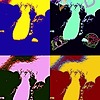HOME | DD
 NanoBanana — Deor Tuffty
NanoBanana — Deor Tuffty

#adopt #adoptable #animal #antlers #artchallenge #au #bitty #brown #cervine #deer #fallow #fluffy #fur #mammal #pink #skeleton #tiny #tuffty #velvet #white #bitties #smol #undertale #bittybones #tufftybitties #tufftybitty #tuffties #tufftember #tufftember2022 #artchallenge2023
Published: 2023-01-30 17:13:40 +0000 UTC; Views: 5218; Favourites: 79; Downloads: 0
Redirect to original
Description
Tuffty Bitties, Deor Tuffty (c) NanoBananaBittybones AU (c) Fucken-Crybaby
=== HOW DO I ADOPT A TUFFTY? ===
You just decide to and do! They are totally and completely free for anyone to adopt, so no need to ask (I'll always say yes). You can adopt as many as you like, just make sure to take care of them. You can write about your Tuffty/Tuffties or draw them, change their clothes, give them accessories, etc. The types described here are like describing the differences between a German Shepard dog and a Great Dane dog. They're all Tuffties, just different "breeds", if you will.
If you adopt a Tuffty, please make sure to credit me for the creation of the species and type. Also, DO NOT adopt them just to kill or maim them (or let other Bitties and creatures kill or maim them). Also also, DO NOT declaw them, crop their ears, or dock their tails! That's just cruel.
=== TUFFTEMBER 2022 ( ~ in January 2023 ~ ) - DAY 30 ===
This type is based on all deer species in the family Cervidae (not including reindeer/caribou--which I've already done--and moose--which will have their own type later)! Be careful though as some species of "deer" are not included in this type. For example neither the musk deer nor the mouse deer (chevrotains) are included as they are part of different genetic families. The name "Deor" comes from Old English and originally just meant a wild animal of any kind, but eventually became more specific over time.
And with this, I've caught up on all the delayed art challenges! Woo! I'll be opening up the PluMay Contest on April 1st and PluMay and Tufftember will finally take place in their respective months. Thank you all for being so patient with me xvx
Deor Tuffty
Height / Tail Length: 6.1 - 22.4" (15.5 - 56.9 cm) / 0.8 - 3.5" (2.0 - 8.9 cm)
Ear Type: Small to large; short to long; and pointed with a narrow base
Fur: They grow fur on their tails, ankles, feet, and a tuft on their heads; their fur is usually short and somewhat thin, growing thicker and longer in colder weather; their coloration seems to mimic those found in nature (only natural colors or patterns found in the family Cervidae EXCLUDING reindeer/caribou and moose!)
Diet: Herbivore (will need calcium and other mineral supplements to help sustain healthy antler growth)
Favorite Food: Forbs (plants with broad leaves) and mast (walnuts, acorns, and other dry fruit from woody plants)
General Opinion: Generally positive, but they can be seen as destructive pests as they do enjoy munching on unguarded gardens and farms. Deor Tuffties can quickly become acclimated to someone willing to share some tasty nuts or mushrooms (non-toxic of course).
Traits: Usually quiet but can become very vocal when upset, adaptable, generally skittish and shy, they tend to keep to themselves, slow to trust, rarely forgives if someone hurts them (physically or emotionally), usually gregarious and social with other Deor Tuffties, compassionate in moderation, observant and alert, active, may seem graceful at first glance but often more scatterbrained than they appear, difficult to predict, they keep their numerous insecurities buried and rarely let others in on their problems, likes to watch others go about their day, they enjoy calm and quiet days, they will take time to groom those they like, they will often adapt to the "love language" of those they are interested in
Notes: Some Deor Tuffties, usually with large antlers, will hold a territory and defend it from those with larger antlers or those looking to take over the territory. Individuals with smaller antlers entering the territory must receive permission from the territory-holder beforehand or risk being chased out and/or injured. Others form groups, often called herds, and travel together. Those that stick to the groups often have smaller antlers and social status is determined by antler size (the larger the better). Fights between Deor Tuffties involve locking their horns together and attempting to knock their opponent down (or break off the opponents antlers). These wrestling matches can go on for hours before one backs down. When fighting with other Bitties, they will attempt to kick or stomp with their sharp feet or toss their foe with their antlers. Many carnivorous animals and Bitties often avoid fights with large-antlered Deor Tuffties due to the risk of major injury from those antlers. These Tuffties are highly adaptable and can live in most regions, but prefer transition zones (like the area between a grassland and forest) for the variety of cover and food selection. Donor Deor Tuffties do not help raise their offspring, but will patrol the territory if they control it. Carrier Deor Tuffties will hide their young offspring in a protected and secluded area when they go foraging for food. Even very young Deor instinctively know to remain still and quiet, even when a potential predator is nearby. They can only travel with their Carrier once they are strong enough to sprint (in case they need to flee). Once they start growing their first set of antlers (just before the end of young adulthood), the offspring will be expected to leave their parents. These Tuffties are usually nocturnal or crepuscular (active at dawn and dusk). Deor Tuffties have excellent hearing and vision, but tend to be far-sighted. They can jump up vertically almost three times their own height and have no trouble swimming. Deor Tuffties will grow a thick coat of fur in autumn and shed this heavy coat in spring. Since their fur becomes quite brittle once it detaches, this type is not sought for its fur but rather their distinctive antlers. While frowned upon, there are many Deor Tuffty "farms" that care for a multitude of these Tuffties and collect their shed antlers each year. There are currently a handful of legal cases in the works to shut down these farms, but prospects are murky at best. In the wild, collecting shed antlers is allowed, but only after mid-March. These Tuffties are often captured or kidnapped by fighting rings to be used as prey targets for more seasoned carnivorous Tuffty or Bitty fighters. Their antlers, sharp hooves, and agility make them challenging opponents, especially once they realize their lives are on the line. Tuffty eyelights are round but can have "rings" inside or outside the main eyelight.
Anatomical Notes: Most Deor Tuffties grow antlers and the shape and size of these depends on the antlers of their parents. While growing, the antlers will be covered in soft "velvet" which is shed usually in late August or September. Their antlers grow throughout most of the year and shed them sometime in December or by early March. These Tuffties can sometimes have small upper jaw tusks, but these are very uncommon. They have unguligrade feet with two forward-pointing nail-toes and two rear-pointing dewclaws. They also have hard coatings on the ends of their fingers made of the same material as their nail-toes. Most Deor Tuffties have somewhat short tails covered in thick fur, but some can have rather dramatic flares of fur (see white-tailed deer) or narrow with a thicker brush at the end (see mule deer). They can have spots or other markings on their bones that color-match to their fur color or markings.
Breeding Notes: Litters born between Tuffties will blend traits between the parents. If breeding with another type of Bitty (like Plumies) and the Tuffty is the Carrier Parent, then all offspring will be a Tuffty. If the Tuffty is the Donor Parent, then all offspring will be the same type as the Carrier Parent (no hybrids!). Deor Tuffties can inherit colors and patterns from other Tuffty types, but not other Bitty types (like Plumies). They cannot pass on their antlers or antler shapes to non-Deor Tuffty offspring.
=== FACE SHAPE NOTE ===
Just as a reminder, all Tuffty and Plumey types can have any human face/skull shape or jaw shape (unless otherwise noted in the type description or trait description)! You can't use animal skulls, bird skulls, etc., but both Tuffties and Plumies can have a different head shape than that which is shown in the example art. :3
Do you have questions about Tuffty Bitties? Check the FAQ here before asking! ^_^
Related content
Comments: 21

👍: 0 ⏩: 0

👍: 0 ⏩: 1

👍: 1 ⏩: 1

👍: 0 ⏩: 0

👍: 1 ⏩: 1

👍: 1 ⏩: 0

👍: 1 ⏩: 1

👍: 0 ⏩: 0

👍: 1 ⏩: 1

👍: 1 ⏩: 0

👍: 1 ⏩: 1

👍: 1 ⏩: 1

👍: 0 ⏩: 0

👍: 1 ⏩: 1

👍: 0 ⏩: 0

👍: 1 ⏩: 0

👍: 0 ⏩: 1

👍: 0 ⏩: 1

👍: 1 ⏩: 1

👍: 0 ⏩: 1

👍: 0 ⏩: 0

















